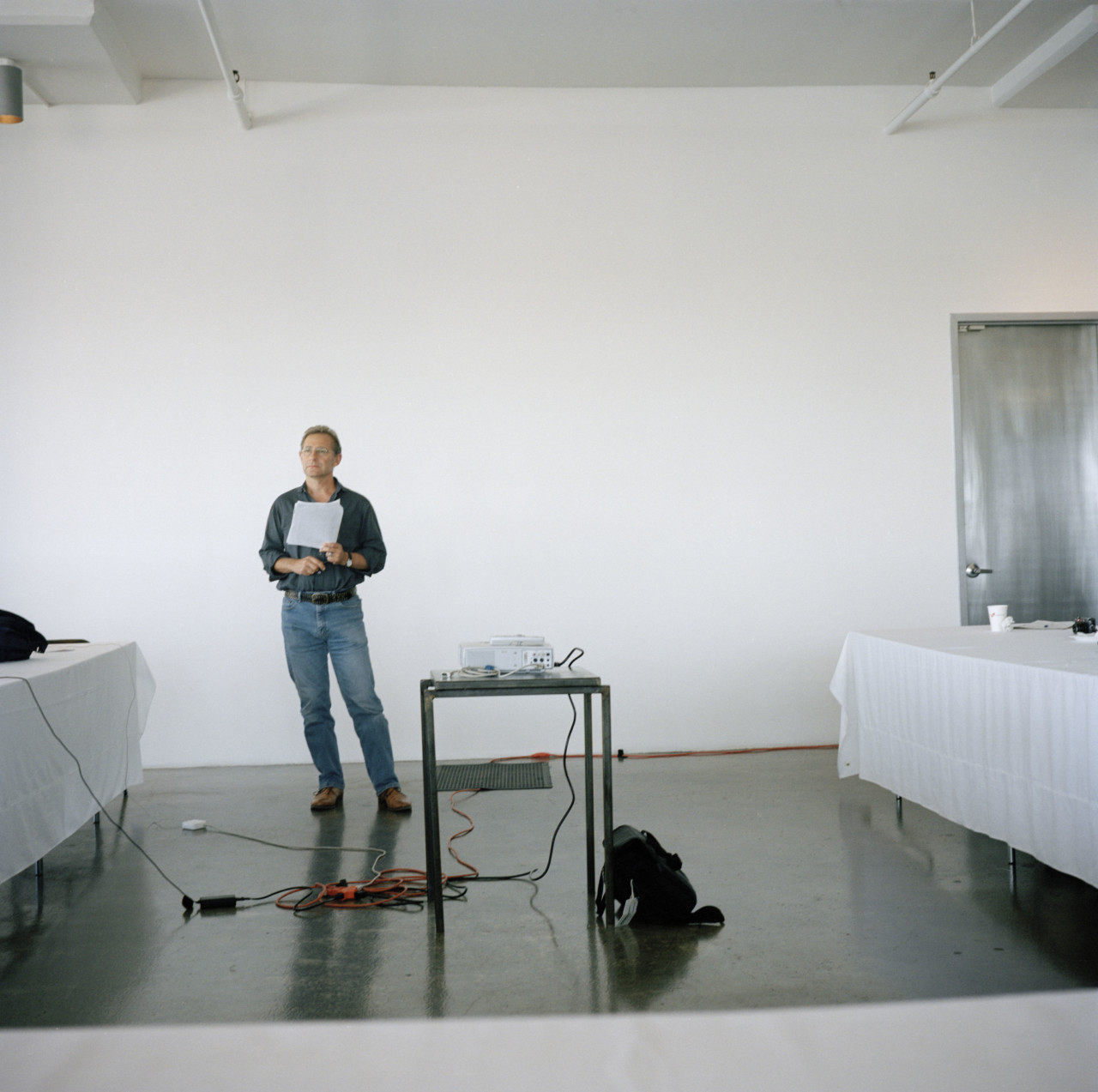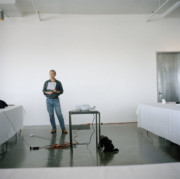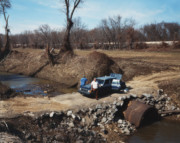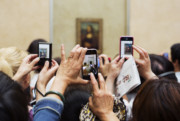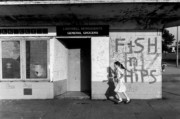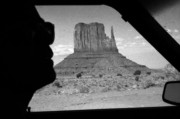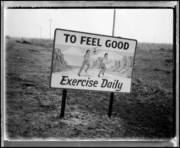Judging The World Press Photo
Magnum photographer and chair of the World Press Photo judging panel, Stuart Franklin, discusses this year’s controversial winner and what ought to make a winning image
Magnum photographer Stuart Franklin joined the agency in 1985, becoming a full member in 1989. That year he took what is arguably one of the most well-known images in photojournalism: a photograph of a man standing head-on in front of a tank in Tiananmen Square during the uprising, which won Franklin a World Press Photo award. Three decades later, Franklin is himself chair of the judging panel for the awards. The winner was – controversially – an image taken by Turkish photographer Burhan Özbilici who went to cover a press conference at an Ankara art gallery on the way home from work on December 19, 2016 and ended up photographing the moment the Russian ambassador to the country was murdered by a gunman. The image may have won, but Stuart Franklin was not one of the judges who voted for it. In an article published by the Guardian, Franklin explained his reasoning: “what is controversial is that an image depicting a premeditated murder, staged at a press conference to maximise publicity, is World Press Photo of the Year.”
Here, he expands on the progression of this debate, and explores more widely the ethics of photojournalism awards.
On his vote against the winning image
My thoughts and my position haven’t changed since the day of reckoning on 5th February when the decision was made. It became clear to me that the decision would be somehow pinned to me as jury chair and I needed to distance myself from that. I have to say I totally welcome debate and discussion about this. I hugely respect Lars Boering, MD of World Press Photo, especially, and the jury for not letting this get into an ugly social media sniping session. Lars acted decisively to stop it. The debate is too important. As I wrote in the Guardian, and communicated to the BJP, I greatly value what World Press Photo stands for and have huge respect for Burhan Özbilici, who took the overall winning picture.
The argument I put forward in the Guardian was based on my concerns that by awarding this image the top prize it would be furthering the compact between martyrdom, or lone wolf acts of terror, and publicity; that in glorifying in some higher way the image would be playing into the hands of the perpetrator by replicating his ‘performance’ and expression of power. Of course, you could say, that already happened when the image hit the front pages. True. But on reflection I draw from the wise words of the ex-editor of The Sunday Times, Sir Harold Evans in his seminal (1978) book Pictures on a Page, updated in 1997.
In a section of the book on the ethics of journalism he refers to the “invitation to a bayoneting in a polo field in Bangladesh where some photographers [including Magnum’s Marc Riboud] walked away without taking a picture and others stayed to record ‘the event’.” Evans continues, “Perhaps the murders would have happened without the camera, and certainly the photographers’ conflict of duties is understandable. But if to take and publish those pictures was correct, was it really wise of the Pulitzer Committee to award a prize?”
The event occurred during the 1971 war for independence in Bangladesh. A picture story from the event did indeed receive a Pulitzer prize, but at World Press Photo, in 1972, it was only given a second prize in the news stories category. I have no idea who was on the jury, but perhaps they were equally conflicted about the images as our jury was in 2017. After all, this too was a staged event, as some felt, encouraged by media presence. I guess I stood alongside Marc Riboud here.
On the ethics of photojournalism
The ethics of journalism and photojournalism evolve, to some degree, as case law does, but even in a global media world this is handled differently in different jurisdictions. Industry professionals constantly refer to specific cases where certain images have or have not been published. In the US considerable disquiet still exists over the suppression of images of lynchings, or extrajudicial killing, that continued through to the 1930s and beyond, especially in the south. Then there was the banning of any images from Hiroshima and Nagasaki from leaving Japan, by the US occupiers, for seven years after the war. So the way images are seen as fit to publish in the US differs from Europe and especially from Norway where the photography of death, especially of its countrymen, is viewed very differently. These cultural determinants are very important to understand.
Moving on to consider the debate in more depth we enter the arena of what I’ll call ‘trophy photographs’ of conflict. These have been around for decades, notably during the Holocaust. I mean by this images of the perpetrator of torture or murder using photography either within a programme of dehumanizing interrogation as we saw in Afghanistan and Iraq, or as an expression of power. In both modes, as Julian Stallabrass has argued in a much anticipated forthcoming book, photography has acted as a ‘force multiplier’.
It’s this second mode – an expression of power – I want to touch on because it comes closest as a parallel to the World Press 2017 winner. In May 2004 Nick Berg, an American radio-tower repairman, was abducted and beheaded by Islamic militants in response to the Abu Ghraib torture and abuse of prisoners. As they decapitated him they shouted the same refrain, in Arabic ‘Allahu Akbar’, as the murderer in the winning picture shouted out during his assassination of the Russian ambassador. There was the motivational link too – in the latter case to the bombing of Aleppo. Now when I wrote in the Guardian that the Özbilici image was as morally problematic as a terrorist beheading it’s this kind of thing I was referencing. Except that the Berg material was shot on video and downloaded half a million times in twenty-four hours.
In 2006 the US presented at a press conference a similar ‘trophy picture’. Just as with a white hunters’ lion kill, two US soldiers in camouflage fatigues stood in front of the press, holding proudly between them a nicely framed picture of the dead Abu Musab Al-Zarqawi, founder of ISIS. There’s a US flag in the picture too. This was all part of a performance, arranged for the press as an expression of power. It seems to me that there are parallels to be drawn between these kind of performances (the tearing down of the Saddam Hussein statues in Baghdad would be another) and the one Burhan Özbilici witnessed in Ankara. I guess it’s because of wariness over set pieces that Rule 2 of the US National Press Photographers Association code of ethics states clearly: “resist being manipulated by staged opportunities.”
Finally, of course it’s worth mentioning the Russian reaction: the Russian embassy in Ankara, whose ambassador Andrei Karlov was shot dead in the December 19 killing, said the decision by the jury was “demoralizing” and showed a “complete degradation of ethics and moral values”. The street by the embassy has been renamed
Karlov Street. The whole thing for me became a problem and so I vehemently voted against it getting the top prize, for all these reasons and because, by almost any measure, it was just not the best picture of the year that we’d seen.
On responsibility and what ought to make a winning photo
Responsibilities, at least from my own perspective, lie with the individual. We are all responsible for our actions, but it’s always better to have an understanding of precedent, of history, which is why I firmly believe in the importance of education for media practitioners. Regarding the responsibilities of institutions, that is down to the editors or publishers, and as I’ve said earlier, their responsibilities will differ markedly from one country to another.
I looked for an empathetic eye. I think contests such as World Press Photo are unique opportunities to shine a light on injustice or issues that the mainstream media only touches on lightly.


